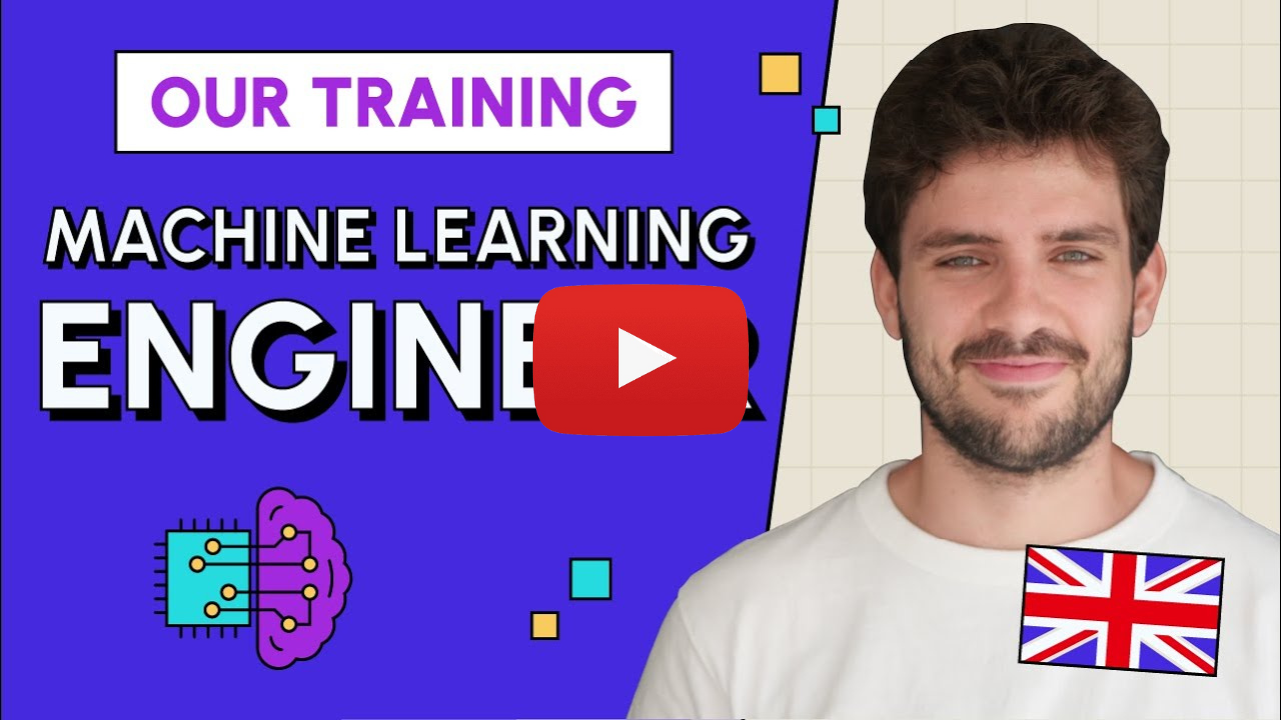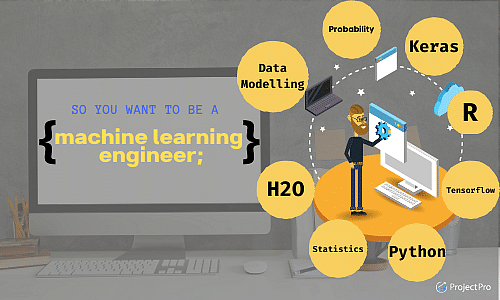All Categories
Featured
Table of Contents
On the various other hand, ML designers specialize in structure and deploying artificial intelligence versions. They focus on training designs with information to make forecasts or automate tasks. While there is overlap, AI designers handle more varied AI applications, while ML engineers have a narrower concentrate on device learning algorithms and their functional execution.
Artificial intelligence engineers concentrate on establishing and deploying artificial intelligence models right into production systems. They work on engineering, making sure designs are scalable, reliable, and integrated right into applications. On the various other hand, data scientists have a more comprehensive function that consists of information collection, cleansing, expedition, and building designs. They are often accountable for extracting understandings and making data-driven choices.
As organizations increasingly embrace AI and equipment discovering innovations, the demand for experienced specialists grows. Machine knowing engineers work on cutting-edge tasks, add to development, and have competitive wages.
ML is fundamentally various from traditional software program advancement as it concentrates on teaching computer systems to find out from information, instead of programming specific rules that are carried out systematically. Uncertainty of results: You are probably utilized to composing code with predictable outputs, whether your feature runs when or a thousand times. In ML, however, the results are less specific.
Pre-training and fine-tuning: Exactly how these versions are educated on vast datasets and then fine-tuned for specific tasks. Applications of LLMs: Such as message generation, view evaluation and details search and retrieval.
Computational Machine Learning For Scientists & Engineers Things To Know Before You Get This
The capacity to handle codebases, combine modifications, and fix disputes is equally as essential in ML growth as it remains in typical software program tasks. The skills developed in debugging and testing software applications are very transferable. While the context may alter from debugging application logic to identifying concerns in data handling or version training the underlying concepts of organized examination, theory screening, and iterative refinement are the same.
Artificial intelligence, at its core, is heavily reliant on stats and likelihood theory. These are vital for understanding exactly how formulas find out from data, make forecasts, and review their performance. You should consider ending up being comfy with concepts like analytical value, circulations, hypothesis testing, and Bayesian reasoning in order to design and interpret versions effectively.
For those thinking about LLMs, an extensive understanding of deep knowing architectures is advantageous. This includes not only the technicians of neural networks however additionally the design of particular designs for different usage instances, like CNNs (Convolutional Neural Networks) for image handling and RNNs (Recurring Neural Networks) and transformers for sequential data and all-natural language handling.

You ought to know these problems and learn techniques for recognizing, reducing, and connecting regarding predisposition in ML designs. This consists of the prospective impact of automated decisions and the honest implications. Many designs, specifically LLMs, call for significant computational resources that are commonly given by cloud platforms like AWS, Google Cloud, and Azure.
Structure these abilities will certainly not just promote an effective change right into ML however additionally make certain that programmers can contribute properly and properly to the innovation of this dynamic field. Theory is crucial, however absolutely nothing defeats hands-on experience. Start functioning on jobs that enable you to use what you have actually discovered in a sensible context.

Build your jobs: Beginning with basic applications, such as a chatbot or a text summarization device, and gradually raise complexity. The field of ML and LLMs is quickly progressing, with brand-new advancements and innovations arising routinely.
Getting My Machine Learning In Production / Ai Engineering To Work
Contribute to open-source jobs or write blog articles regarding your learning journey and tasks. As you acquire expertise, begin looking for chances to incorporate ML and LLMs into your job, or look for new duties focused on these technologies.
Potential use situations in interactive software program, such as suggestion systems and automated decision-making. Recognizing uncertainty, standard statistical measures, and probability distributions. Vectors, matrices, and their function in ML formulas. Error reduction strategies and gradient descent described just. Terms like model, dataset, features, labels, training, inference, and recognition. Information collection, preprocessing methods, version training, evaluation procedures, and implementation factors to consider.
Choice Trees and Random Woodlands: Intuitive and interpretable designs. Assistance Vector Machines: Optimum margin classification. Matching trouble kinds with proper designs. Balancing efficiency and intricacy. Standard framework of neural networks: nerve cells, layers, activation functions. Split computation and forward propagation. Feedforward Networks, Convolutional Neural Networks (CNNs), Frequent Neural Networks (RNNs). Photo acknowledgment, sequence forecast, and time-series analysis.
Data flow, transformation, and attribute design methods. Scalability concepts and efficiency optimization. API-driven methods and microservices integration. Latency management, scalability, and variation control. Continual Integration/Continuous Release (CI/CD) for ML workflows. Version monitoring, versioning, and efficiency monitoring. Identifying and resolving changes in design efficiency with time. Dealing with performance bottlenecks and resource monitoring.
The Greatest Guide To Machine Learning Engineer Learning Path
You'll be presented to three of the most relevant components of the AI/ML self-control; monitored learning, neural networks, and deep understanding. You'll understand the distinctions in between traditional programming and device learning by hands-on growth in monitored learning prior to developing out complicated distributed applications with neural networks.
This training course works as a guide to machine lear ... Show A lot more.
The average ML workflow goes something like this: You require to comprehend the company problem or goal, prior to you can attempt and resolve it with Artificial intelligence. This often indicates research study and partnership with domain name degree professionals to define clear goals and requirements, in addition to with cross-functional groups, consisting of information researchers, software application engineers, item managers, and stakeholders.
: You choose the most effective version to fit your goal, and after that educate it making use of collections and structures like scikit-learn, TensorFlow, or PyTorch. Is this functioning? A vital part of ML is fine-tuning designs to obtain the preferred outcome. At this stage, you assess the efficiency of your selected equipment finding out design and after that use fine-tune version parameters and hyperparameters to enhance its performance and generalization.
This may entail containerization, API development, and cloud deployment. Does it continue to work currently that it's online? At this stage, you check the performance of your deployed designs in real-time, determining and resolving problems as they develop. This can likewise indicate that you upgrade and retrain models routinely to adapt to changing information distributions or company requirements.
5 Simple Techniques For From Software Engineering To Machine Learning

Artificial intelligence has actually blown up in recent years, many thanks partially to advances in data storage space, collection, and computing power. (In addition to our need to automate all the things!). The Device Learning market is predicted to reach US$ 249.9 billion this year, and afterwards remain to grow to $528.1 billion by 2030, so yeah the need is rather high.
That's simply one work uploading internet site likewise, so there are even a lot more ML work out there! There's never been a far better time to get right into Device Understanding.
Below's the important things, technology is one of those sectors where some of the biggest and best individuals in the globe are all self taught, and some even honestly oppose the concept of individuals getting a college level. Mark Zuckerberg, Bill Gates and Steve Jobs all went down out prior to they got their degrees.
Some Ideas on Software Developer (Ai/ml) Courses - Career Path You Need To Know
As long as you can do the job they ask, that's all they really care about. Like any new ability, there's absolutely a finding out curve and it's going to really feel difficult at times.
The primary distinctions are: It pays insanely well to most various other professions And there's an ongoing knowing element What I indicate by this is that with all tech functions, you need to stay on top of your game so that you understand the existing abilities and adjustments in the sector.
Read a few blogs and attempt a couple of devices out. Kind of simply exactly how you might discover something new in your present job. A great deal of people that operate in tech actually appreciate this due to the fact that it suggests their job is always transforming a little and they take pleasure in finding out new things. It's not as frantic an adjustment as you might believe.
I'm going to mention these abilities so you have an idea of what's called for in the task. That being stated, a great Equipment Knowing course will educate you mostly all of these at the very same time, so no need to stress. Several of it might even appear difficult, however you'll see it's much less complex once you're using the theory.
Table of Contents
Latest Posts
The Best Mock Interview Platforms For Software Engineers
Software Developer (Sde) Interview & Placement Guide – How To Stand Out
How To Answer “Tell Me About Yourself” In A Software Engineering Interview
More
Latest Posts
The Best Mock Interview Platforms For Software Engineers
Software Developer (Sde) Interview & Placement Guide – How To Stand Out
How To Answer “Tell Me About Yourself” In A Software Engineering Interview